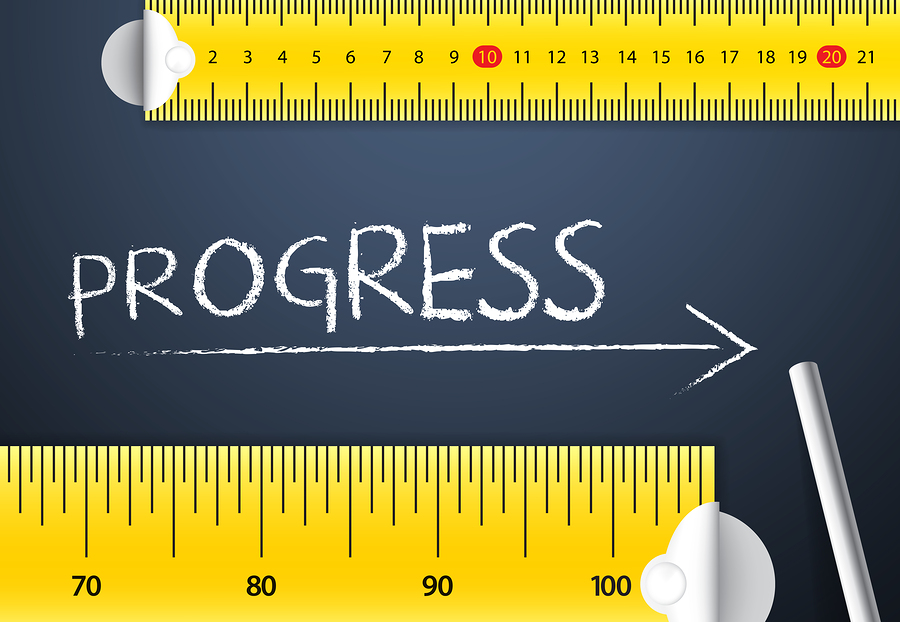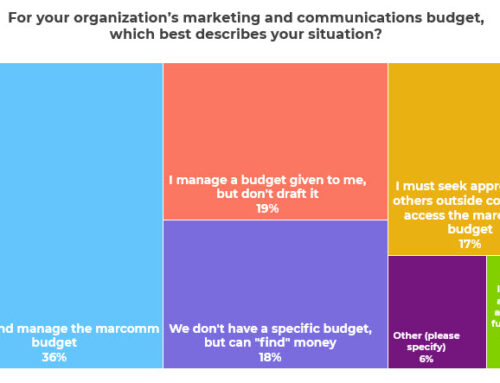 Measuring the effectiveness of your nonprofit’s communications is a complicated puzzle.
Measuring the effectiveness of your nonprofit’s communications is a complicated puzzle.
You have the effectiveness of specific channels like your website or Facebook page. Those depend on the effectiveness of the content you create. That depends on the effectiveness of your editorial calendar. That in turn depends on your larger marketing strategy, which depends on your organizational goals. Then there’s the effective management and growth of your communications team. That’s a lot to consider!
So what DO you measure? There’s no one right answer for every nonprofit because of all these different variables. It really does depend on the specifics of your organization.
But here are three key communications measurement concepts that you should keep in mind, no matter where you work.
Know What Parts of the Relationship You Are Measuring.
Nonprofit communications work is all about building relationships with the people you are communicating with. Those relationships, whether with donors, clients, advocates, influencers, or whoever, have different levels and stages.
Here’s one common approach: Divide your metrics into those that measure Activity, Reach, Engagement, and Impact.
Activity = content you created. How many emails did you send last month?
Reach = who and how many saw it. How many people received the email?
Engagement = what they did when they saw it. How many people opened it and clicked? (Sometimes we put Opens under Reach.)
Impact = the results of that engagement. How many people completed the action on the website after the click from the email?
Understand the Difference Between Performance and Predictive Metrics.
Most of us think of KPIs as Key Performance Indicators that measure how we are doing. But that P can also stand for Predictive.
Here’s the difference. Performance = what happened. It measures the past. Predictive = activity that you expect to create Performance in the future.
Weighing yourself on a scale is a Performance measure. The number of times you exercise or how much sugar you eat would be Predictive metrics that contribute to an expected Performance number.
In our work, how much money you raised last quarter is a Performance metric. What you need to figure out are the Predictive measures that are most likely to lead to that Performance measure, and make sure you meet those targets. How many direct mail letters and how many emails need to go out and in what time period?
So much of good communications work is better measured by Predictive rather than Performance measures. That’s in part because Performance measures like how much your organization is trusted are very hard and expensive for nonprofits to measure. But figuring out how to build trust in your community, and measuring that, is much easier.
The extent that you follow best practices, including CALM not BUSY management approaches, could be another Key Predictive Indicator to track.
Pick Just Three KPIs and Let Everything Else Fall from That.
Herbert A. Simon said “a wealth of information creates a poverty of attention.” We have hundreds of different ways to measure nonprofit communications work. That wealth of information makes it very hard to focus on the metrics that are most important.
What if you decided to pick just three indicators of success toward your goal?
For example, in the corporate world, many companies don’t include profits as a KPI. Instead, they focus on the things that they know create profits, like good customer service, or the introduction of a certain number of new products each year. They know it’s effectiveness on those few essentials that leads to profits.
For nonprofit fundraising, maybe a better measure is not dollar raised, but your donor retention rate or how many times you contact a donor.
For community engagement, maybe the better measure is not the size of your mailing list or your open rate, but the percentage of the list that opens at least one email a month.
As I said, it’s a lot to sort out. I’ll be teaching a two-part webinar series on October 17 and 19, 2017 to give you the tools to do that sorting at your nonprofit. Learn more and register now.
What questions do you have about measuring nonprofit communications effectiveness? Have you figured out some ways to do it that work for your organization? Please share your thoughts in the comments!





